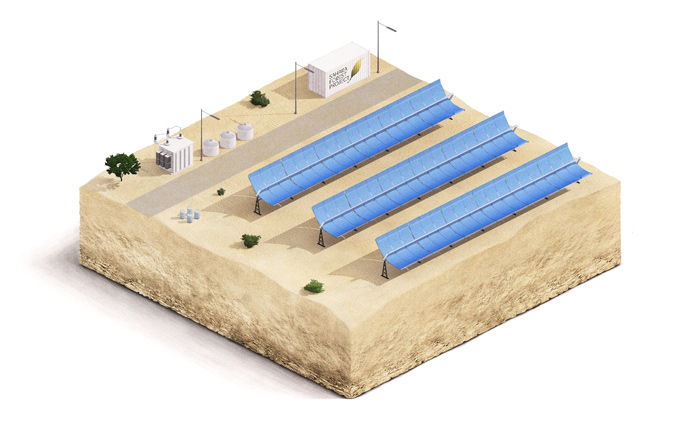
According to legend, Archimedes once used polished shields to concentrate sunlight on the invading Roman fleet and repel them from Syracuse. Today the principle of Concentrated Solar Power (CSP) is applied in large solar power plants in sunny locations worldwide. It has a clear potential to provide large-scale renewable energy production.
Most systems use mirrors to concentrate the energy from the sun and create very high temperatures, which produce superheated steam that can power a conventional steam turbine. As with all thermal power plants, the highest efficiency is achieved by having the hottest steam and the coldest condenser temperature. In modern systems, cooling is provided by evaporating water (wet cooling) or through large heat exchangers with the ambient air (dry air cooling).
Wet cooling sustains a more significant cooling efficiency than dry cooling and gives electrical efficiencies higher than dry cooling. Wet cooling also has lower investment costs than dry but requires large volumes of fresh water, often not available in desert areas. This is also recognized by the International Energy Agency, which states in its technology roadmap for CSP that ‘given the arid/semi-arid nature of environments that are well-suited for CSP, a key challenge is accessing the cooling water needed for CSP plants.
In the Sahara Forest Project, Seawater-cooled greenhouses and CSP technology are linked together. The water-thirsty cooling towers of a typical CSP plant are replaced with a seawater cooling system that utilizes the greenhouse roofs to dissipate the waste heat from the CSP process.
There are several arrangements of mirrors that can be utilized to focus the energy to achieve the high temperatures required. Tower systems use a field of mirrors that can be steered in two dimensions to focus the sunlight onto a receiver on top of a tower. Trough systems used curved mirrors formed into parabolas to focus the sun onto a pipe receiver mounted at the focal point. The mirrors are steered in one dimension to follow the elevation of the sun. Finally, Fresnel systems use an array of long flat mirrors mounted horizontally that rotate to focus onto a pipe suspended above the mirrors.
